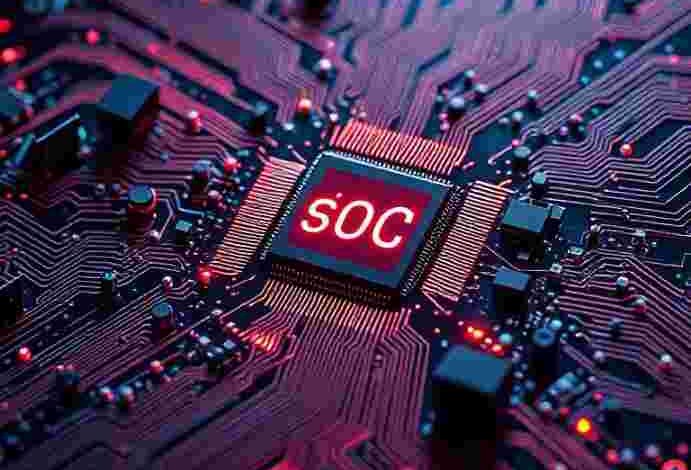What Are SoCs? A Deep Dive into the Heart of Modern Electronics

If you’re even vaguely familiar with the gadgets we use daily—smartphones, tablets, wearables, or even smart home devices—you’ve probably heard the term SoCs thrown around a lot. But what exactly are SoCs, and why are they such a big deal in today’s tech landscape? Whether you’re a tech enthusiast, a budding engineer, or just someone curious about how your devices work, understanding SoCs can give you a clearer picture of the backbone powering modern electronics.
In this article, we’ll explore what SoCs are, their significance, the different types available, and how they continue to shape the future of technology. By the end, you’ll have a comprehensive grasp of these tiny yet mighty components that make our digital world tick.
What Are SoCs? Breaking Down the Basics
System on Chip (SoC) is a term that might sound technical, but at its core, it’s surprisingly straightforward. Think of an SoC as a mini-computer integrated onto a single piece of silicon. It combines multiple essential components—like the CPU, GPU, memory controllers, and even communication interfaces—into one compact chip.
The Components That Make Up an SoC
Most modern SoCs include:
- Central Processing Unit (CPU): The brain of the device, managing general tasks and processing instructions.
- Graphics Processing Unit (GPU): Handles visuals and graphics rendering, crucial for gaming and multimedia.
- Memory Controllers: Manage data flow between the CPU and RAM.
- Connectivity Modules: Such as Wi-Fi, Bluetooth, or cellular modems.
- Image Signal Processors (ISPs): Power camera functionalities.
- Security Modules: For encryption and secure data handling.
All these components are meticulously integrated to work seamlessly, reducing the size, power consumption, and manufacturing costs of devices.
Why Are SoCs So Important?
By consolidating multiple functions into a single chip, SoCs enable smaller, more efficient devices. They also reduce power consumption—crucial for mobile gadgets—while boosting performance. This compactness and efficiency are why SoCs are at the heart of modern electronics.
The Evolution of SoCs: From Early Days to Cutting-Edge Tech
Understanding how SoCs have evolved helps us appreciate their current capabilities and future prospects. The journey from simple integrated circuits to sophisticated, multi-core chips reflects the rapid pace of technological innovation.
Early Days: Monolithic Chips and Basic Integration
Back in the ’80s and ’90s, chips were primarily focused on specific functions—just CPUs or memory modules. As technology advanced, engineers began combining related functions into single chips, leading to the first generation of SoCs in the late 1990s and early 2000s. These were primarily used in mobile phones and embedded systems.
The Smartphone Revolution: Doubling Down on Integration
The launch of the iPhone in 2007 marked a turning point. Apple’s A4 chip, introduced in the first iPad and iPhone 4, showcased the power of integrating CPU, GPU, and memory controllers into a single chip. This move revolutionized mobile computing, enabling devices to be slimmer, lighter, and more energy-efficient.
Today: Multi-Core, AI-Enabled, and 5G-Ready SoCs
Modern SoCs are marvels of engineering. They feature multi-core processors, dedicated AI accelerators, and integrated 5G modems. For example, Qualcomm’s Snapdragon 8 Gen 2, released in 2024, packs a 3.2 GHz octa-core CPU, advanced AI capabilities, and 5G connectivity—all on a single chip. This level of integration allows devices to perform complex tasks like real-time language translation or high-resolution gaming without breaking a sweat.
Types of SoCs: Different Designs for Different Needs
Not all SoCs are created equal. Depending on their application, they vary in complexity, size, and functionality. Here’s a quick rundown of the main types:
| Type | Description | Typical Use Cases |
|---|---|---|
| Mobile SoCs | Optimized for power efficiency, compact size | Smartphones, tablets |
| Embedded SoCs | Designed for specific functions in embedded systems | IoT devices, automotive systems |
| Desktop/server SoCs | High performance, multi-core, large cache | PCs, servers, data centers |
| AI Accelerators | Focused on machine learning tasks | AI inference engines, robotics |
Mobile SoCs: Powering the Smartphones We Love
Mobile SoCs are perhaps the most ubiquitous today. They’re designed to balance performance with battery life, making them perfect for smartphones and tablets. Companies like Apple, Qualcomm, and MediaTek develop these chips, often integrating AI capabilities, camera processing, and connectivity modules.
Embedded SoCs: The Backbone of IoT and Automotive Tech
Embedded systems are everywhere—from smart thermostats to autonomous vehicles. Embedded SoCs are tailored for specific tasks, often operating in harsh environments and requiring high reliability. They tend to be smaller, with custom features suited for their niche.
High-Performance SoCs for Computers and Servers
While traditional computers rely on separate CPUs and GPUs, the trend is shifting toward integrated SoCs for desktops and servers. Apple’s M1 and M2 chips exemplify this, offering impressive performance with remarkable energy efficiency, challenging the longstanding dominance of x86 architecture.
How SoCs Are Shaping the Future of Technology
Looking ahead, SoCs are poised to become even more integral to our digital lives. Their evolution is driven by several trends, including AI, 5G, and edge computing.
AI Integration: Making Devices Smarter
AI capabilities embedded directly into SoCs are transforming how devices understand and respond to their environment. From voice assistants to autonomous vehicles, AI accelerators embedded in SoC allow real-time data processing without relying on cloud servers, reducing latency and enhancing privacy.
5G and Beyond: Faster, More Reliable Connectivity
The rollout of 5G has prompted the integration of advanced communication modules directly into SoCs. This means future smartphones and IoT devices will be more connected, with faster download speeds, lower latency, and improved network reliability.
Edge Computing: Processing Data Closer to Where It’s Generated
Rather than sending all data to the cloud, edge devices equipped with powerful SoCs can process information locally. This reduces bandwidth requirements and improves response times—crucial for applications like autonomous driving, smart factories, and real-time health monitoring.
The Challenges Facing SoC Development
Despite their many advantages, designing and manufacturing SoCs isn’t without hurdles.
Complexity and Cost
As SoCs become more sophisticated, the design process grows increasingly complex. Integrating diverse components on a single chip requires advanced manufacturing techniques and extensive testing, which can be costly and time-consuming.
Power Management
While SoCs aim to be energy-efficient, managing power consumption—especially in high-performance models—is a delicate balancing act. Overheating or excessive energy use can impair device longevity and user experience.
Security Concerns
With so many functionalities integrated into a single chip, security becomes paramount. A vulnerability in one component could potentially compromise the entire system, making secure design and updates essential.
Final Thoughts: Why SoCs Matter More Than Ever
In the rapidly evolving world of technology, SoC are the unsung heroes enabling the sleek, powerful devices we rely on every day. Their ability to condense complex computing functions into a tiny footprint has revolutionized everything from smartphones to AI-powered systems.
As we look toward a future filled with smarter, faster, and more connected devices, the importance of SoCs will only grow. Innovations like integrating AI, supporting 5G, and enabling edge computing will continue to push the boundaries of what’s possible—making these chips central to the next wave of technological breakthroughs.
FAQs: Let’s Clear Up the Common Questions
Q: Are SoCs only used in smartphones?
Not at all. While they’re most famous for powering smartphones, SoC are also used in tablets, smart TVs, IoT devices, automotive systems, and even high-performance computing.
Q: How do I know if a device has a good SoC?
Look at the chipset model and read reviews. For smartphones, the chipset (like Qualcomm Snapdragon 8 Gen 2 or Apple A17 Pro) is a good indicator of performance and capabilities.
Q: Can SoCs be upgraded?
Generally, no. SoC are integrated into devices during manufacturing. Upgrading typically requires replacing the entire device.
Q: Are SoCs secure?
Manufacturers implement security features, but vulnerabilities can still arise. Regular updates and patches are essential to keep devices secure.
Q: Will SoCs replace traditional CPUs or GPUs?
Not entirely. Instead, SoC often incorporate CPUs and GPUs for a more integrated approach. High-end servers or specialized systems might still use separate components for maximum performance.
In Summary: SoCs are the tiny powerhouses behind the modern digital experience. Their continuous innovation drives better performance, efficiency, and connectivity across a broad spectrum of devices. As technology advances, understanding SoC becomes increasingly vital—because they’re not just chips; they’re the foundation of our digital future.
If you’re curious to see visual representations or want to explore further, I recommend checking out the latest tech breakdowns from industry leaders or visiting manufacturer websites for detailed specs. And remember, behind every sleek device lies a complex, fascinating world of integrated technology—centered around the incredible system on chip.



